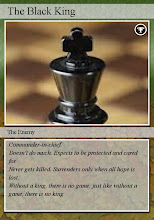I was extremely happy to find podcasts in this 23 things on a stick. I am proud to say I am somewhat of a podcast veteran. I have used podcasts as a means of entertainment for a number of years.
This is perhaps the Web 2.0 tool I use the most. I download podcasts of programs from NPR and other radio stations. I have even dowloaded podcasts from higher education institutions in the form of lectures.
The best feature about podcasts is their flexibility. most of the content in podcasts are from programs that normally one would listen to aired in the radio. The difference between these and podcasts is the sound quality, much better in podcast form, their portability and time flexibility. Radio programs are subject to a time schedule, but podcasts can be listened to anytime, anywhere after the original radio show has aired. In this sense, poscasts are truly "radio on demand".
There are also video podcasts of some shows in television. these are rarer due, I suspect, to many factors. Perhaps TV companies want their audiences to keep watching television and discourage the posting of content in this format. Also, even though portable players are quite advanced, the demand for space that video podcasts impose makes them not such an appealing option to see video. The restrictions imposed by the size of portable video screens might also have something to do with the limited popularity of video podcasts.
Not only radio and TV post podcasts, virtually anyone with enough knowledge of the medium can post a podcast for others to listen to, although they are not very popular. People are more drawn to either post information in writing, such as blogs and web sites, or video, such as YouTube. Given the choice, I think most people would prefer to publish a video than a podcast. Nevertheless, for information naturally found in audio only, like radio programs, podcasts have the potential to take their media to the next level, the Web 2.0 level.
Saturday, October 10, 2009
Subscribe to:
Post Comments (Atom)


No comments:
Post a Comment